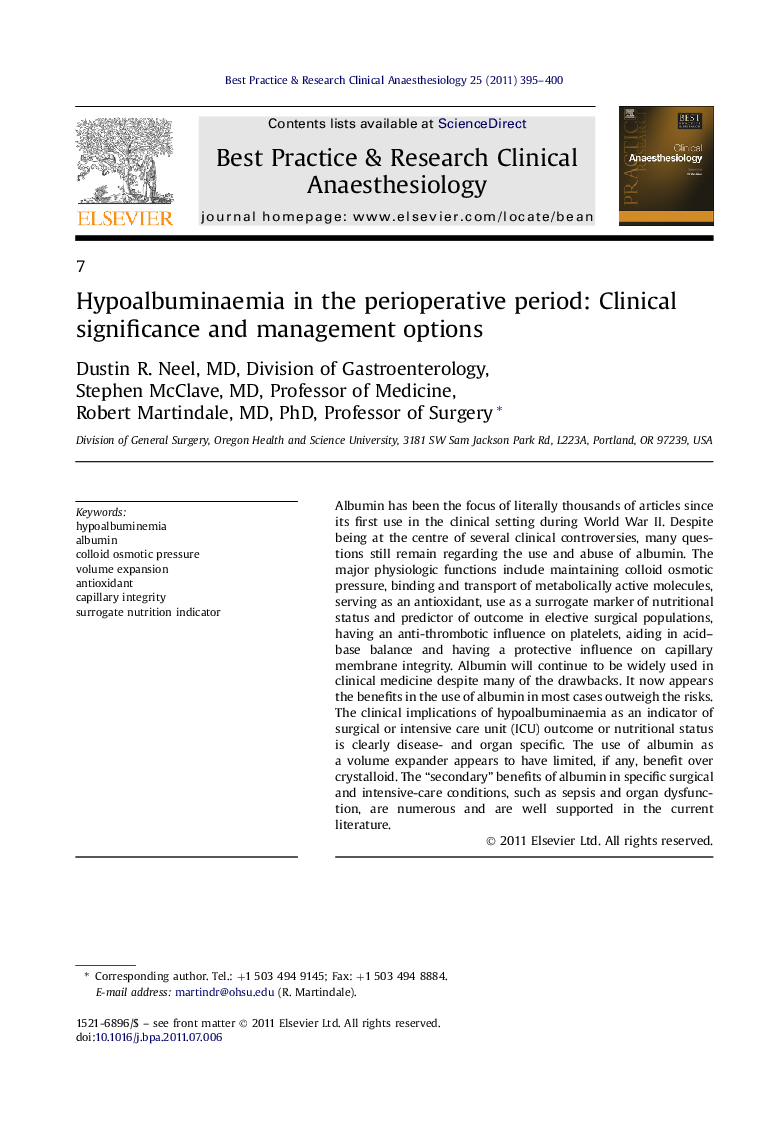| Article ID | Journal | Published Year | Pages | File Type |
|---|---|---|---|---|
| 2748649 | Best Practice & Research Clinical Anaesthesiology | 2011 | 6 Pages |
Albumin has been the focus of literally thousands of articles since its first use in the clinical setting during World War II. Despite being at the centre of several clinical controversies, many questions still remain regarding the use and abuse of albumin. The major physiologic functions include maintaining colloid osmotic pressure, binding and transport of metabolically active molecules, serving as an antioxidant, use as a surrogate marker of nutritional status and predictor of outcome in elective surgical populations, having an anti-thrombotic influence on platelets, aiding in acid–base balance and having a protective influence on capillary membrane integrity. Albumin will continue to be widely used in clinical medicine despite many of the drawbacks. It now appears the benefits in the use of albumin in most cases outweigh the risks. The clinical implications of hypoalbuminaemia as an indicator of surgical or intensive care unit (ICU) outcome or nutritional status is clearly disease- and organ specific. The use of albumin as a volume expander appears to have limited, if any, benefit over crystalloid. The “secondary” benefits of albumin in specific surgical and intensive-care conditions, such as sepsis and organ dysfunction, are numerous and are well supported in the current literature.
